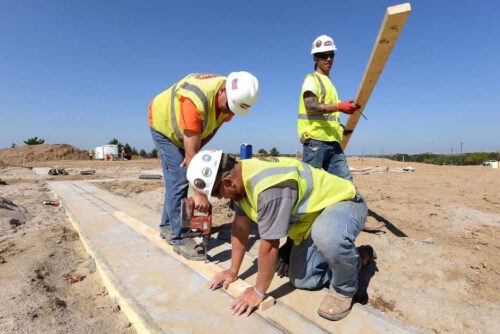Article
OSHA’s New Heat Standards Rule Could Face Scorching Opposition

Article
Fact-based, data-driven research and analysis to advance democratic debate on vital issues shaping people’s lives.
Center for Economic and Policy Research
1611 Connecticut Ave. NW
Suite 400
Washington, DC 20009
Tel: 202-293-5380
Fax: 202-588-1356
https://cepr.net
The Occupational Safety and Health Administration (OSHA) proposed a new rule earlier this month to protect workers from excessive heat in the workplace. If finalized, this rule would set the first-ever federal safety standard addressing this issue in the United States. California, Oregon, Washington, Minnesota, and Colorado (limited to agricultural workers) have adopted outdoor workplace heat standards, and the city of Phoenix enacted similar protections earlier this year. As for workers in hot indoor environments, California joined Oregon and Minnesota last month in enacting regulations to prevent heat illness in indoor places of employment. OSHA’s proposed rule would cover both indoor and outdoor environments across the country — as long as businesses and some state governments don’t intervene first.
In general, rising global temperatures are presenting unexpected challenges. An Associated Press analysis of Centers for Disease Control and Prevention data found that in 2023, heat deaths hit a record high, with 2,300 people dying in the United States last summer. That number is likely an underestimate.
Research has found that older adults are especially vulnerable during heat waves owing to social isolation and economic behaviors such as turning off air conditioning to save money. However, workers are also placed in situations where excessive heat can be deadly. Outdoor workers in industries such as construction, agriculture, landscaping, and utilities are the most apparent group at risk due to their work environment. However, indoor workers are also at risk because certain indoor environments, like warehouses, can be extremely warm and expose workers to heat-related risks. And right now, most workers need protections to prevent unnecessary deaths and illnesses due to excessive heat.
The proposed OSHA rule would implement preventive measures and guidelines for environments where the temperature reaches a heat index of 80°F or higher. These measures include paid rest breaks, employer-provided break areas and water sources, developing and implementing a heat emergency response plan, and training on heat stress hazards, heat-related injuries and illnesses, risk factors, and prevention strategies.
How does this interact with states that currently have regulations? In an email from the Department of Labor, officials stated:
The proposed rule would have downstream application in States with OSHA-approved State Plans by virtue of the OSH Act requirement that State Plans provide an occupational safety and health program at least as effective as federal OSHA which must cover both private and state and local government employees.
This language means current state regulations would need to be adjusted. For example, California has an indoor threshold temperature of 82°F, and the regulation exempts workers at the 33 state prisons, conservation camps, and local jails. An earlier regulation draft included state prison workers but was dropped due to “implementation challenges.” California Governor Gavin Newsom intends to establish separate regulations for correctional facilities, although the process may take up to a year or more to complete. Since California has no regulations in place for those workers, federal language would force the state to either move quickly on stronger standards or implement federal rules.
What’s really unclear is how states opposing regulations will react to the federal rule, particularly Florida and Texas. Effective July 1, a Florida law supported by the Florida Chamber of Commerce and construction and agriculture industries prohibits cities and counties within the state from enacting heat-protection regulations for businesses. The law comes in response to considerations made by Miami-Dade County officials last year regarding implementing such rules. The law is similar to a Texas law enacted in 2023 that preempts local ordinances and regulations in various categories, including construction worker rest break requirements in Austin and Dallas. Florida and Texas could challenge the federal rule in court. Republicans, including a former chair of Louisiana’s Coastal Protection and Restoration Authority, and construction companies are already criticizing the proposed rule. In light of a Supreme Court that favors state and market rights and seeks to limit federal influence, federal regulation will likely be impeded despite the potential death toll associated with the absence of federal oversight.
The proposed OSHA rule is critical to protect workers from extreme heat. While its implementation faces potential challenges, including interactions with existing state regulations and opposition from states such as Florida and Texas, the rule demonstrates an increasing awareness of dangers associated with rising global temperatures. According to NOAA, 2023 was the hottest year on record, and 2024 is already breaking those records. In light of increasing heat-related deaths and illnesses, workers need comprehensive heat protection measures now. The federal government must ensure these protections can withstand legal and political challenges. Otherwise, elected officials and employers are sentencing workers to die as part of a cost-benefit calculation.